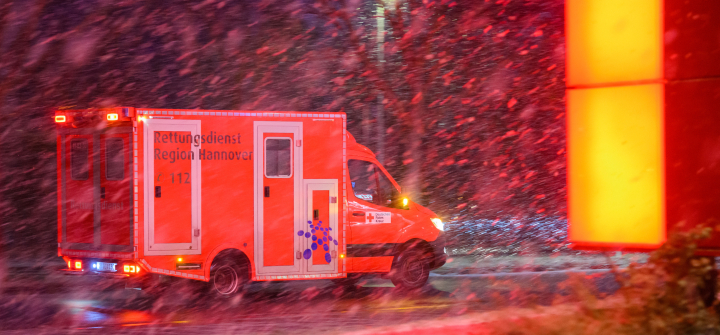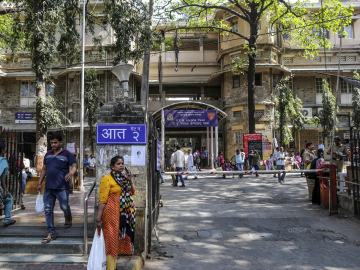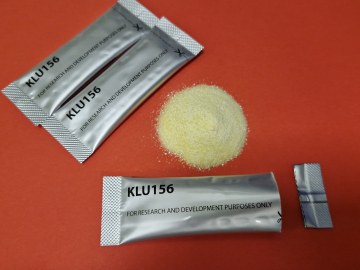A Smarter, Better Fight in the Next Pandemic
Roundly seen as a triumph of self-interest and collective failure, the response to the ongoing COVID-19 pandemic proved that countries must prepare for a more coordinated, equitable effort before the next pandemic strikes.
First steps in that direction leaked out Feb. 2 in the form of a “zero draft” of a pandemic treaty created by the Intergovernmental Negotiating Body comprising representatives of WHO Member States. The treaty seeks to sharpen global preparedness. But it also needs to set clear expectations for how countries should respond—including how new treatments and vaccines should be shared, argues Barbara M. Stocking, MA, chair of the Panel for a Global Public Health Convention.
In a Q&A with GHN (via email), Stocking, a Dame Commander of the British Empire and the former chair of the Independent Panel of Experts that assessed the WHO’s response to the 2014-2016 Ebola outbreak, explains the complications and shortfalls of the treaty’s early draft, how to hold nations accountable, and how to incentivize them to share new technologies in the face of a burgeoning pandemic.
What was the biggest failure in the COVID-19 pandemic in your view, and how does the draft pandemic treaty address this?
The biggest failure was that countries weren’t prepared and didn’t respond in time. During the “lost month” of February 2020, countries took a wait-and-see approach. Many didn’t appreciate the exponential nature of the virus, and most governments didn’t have tried-and-true preparedness and response systems to activate.
The draft treaty covers preparedness but currently says very little about response. This may be because the International Health Regulations (IHR), which legally require countries to address potential health threats, cover some of these obligations when it comes to response, such as sharing data and providing access to samples for genetic analysis. Yet, the IHR were either completely ignored or inadequately observed during the pandemic.
The fact that the IHR are now being revised at the same time as this treaty is being negotiated doesn’t help. The two processes need to work in harmony, and the treaty itself must codify how countries are expected to respond in a crisis and how they are held to account, which we now know cannot be left to the IHR alone.
Your Panel has noted that “Accountability is one of the most sparingly used terms in the treaty.” What should accountability look like for countries once the treaty is finally passed?
Countries must know what they are accountable for and who they are accountable to. If there is no accountability at this level, then there is no point in having a new treaty.
Countries should be accountable for both preparedness and response. The draft treaty begins to outline what that looks like, including preparedness requirements that cover the whole of government, not just public health systems. As we saw with COVID-19, pandemics impact every facet of society, so more than just the health sector must be prepared.
The draft treaty proposes a peer review system, but my Panel is quite clear that there will need to be independent assessment by an autonomous body—ideally at arm’s length to the WHO to avoid the political dynamic which can and will take place when countries assess each other. Such independent assessment is needed as much for pandemic response as it is for preparedness.
The zero draft, according to early reporting, reserves 20% of tests, vaccines, or treatments developed for low-income countries. What’s your take on this—is it enforceable or even realistic to expect wealthy countries to follow this measure?
The zero draft takes the principle of equity very seriously, including access to medicines, diagnostics and vaccines. There is clear recognition that it is unacceptable for these public goods to be available in some countries and not others. The question is what mechanisms will countries accept in order to ensure lifesaving tools are equitably shared.
There are many ideas of what will work to produce equity, and the 20% mechanism would be one way to achieve this. More importantly, expanding manufacturing capacity, as well as transferring the appropriate know-how and technology in low- and middle-income countries is paramount. Another idea is that countries that have put enormous resources into research and then into the development of drugs and vaccines should require companies to ensure products of their R&D reach people in LMICs by selling at cost.
While many are hesitant to change the status quo, the reality is that seismic changes are needed if we want different results.
A waiver of patent rights for new meds and vaccines is included in the draft treaty. Big Pharma successfully put off this strategy during COVID—do you think it will survive and be included in the final version of the treaty?
I was Chief Executive of Oxfam Great Britain in 2001 and 2002 when the TRIPS waiver on patent rights in health emergencies was negotiated. My personal opinion is that this waiver should not only be used for drugs, but also for vaccines when there are public health emergencies. Countries at every income level need to be able to respond to health threats before they become global pandemics, and that’s simply not possible if medicines and vaccines can’t quickly reach people everywhere.
Will this be included in the treaty? I hope so.
What’s the best way to incentivize governments to share technologies they invest in for their citizens?
Governments are responsible for protecting the public health of their citizens. As disease outbreaks know no borders, it’s also in all countries’ self-interest to ensure people around the world have access to lifesaving technologies. If the socioeconomic fallout from COVID-19 wasn’t incentive enough, I don’t know what is.
However, actual incentives are needed throughout the pandemic treaty, not just for sharing technologies. Independent assessment and public reporting will provide incentive for countries interested in upholding their reputation on the global stage, but our Panel and others are considering additional ideas.
Under Article IV of the IMF's Articles of Agreement, the IMF regularly assesses countries’ financial stability. What if reviews included pandemic preparedness and response targets? Countries would be incentivized to meet such targets to obtain favorable assessment, a key factor in the financial market. This isn’t far-fetched; climate change mitigation is already under consideration for inclusion in these very assessments.
Based on your deep experience, how will all the treaty negotiations play out? Are we talking a couple years of bluster, policy fights, and wealthy countries having undue influence, followed by a frenzy of late-night deals that leave everyone dissatisfied?
The Intergovernmental Negotiating Body (INB), which is made up of WHO Member States, has a mandate to deliver this agreement at the World Health Assembly in May 2024. Countries have an obligation to fulfill this timeline, and as citizens of such countries, we have an obligation to keep the pressure on.
So far, there has been goodwill to keep this treaty on track and the process transparent, but that doesn’t mean we can sit back and relax. We need to ensure the process remains rigorous and equitable. For instance, renegotiating IHR in Geneva limits the involvement of low- and middle-income countries, and parallel tracks of negotiation impose a significant burden on negotiating teams, particularly for smaller countries.
Finally, early signs that real decisions on accountability may be kicked down the road, or off the road completely, is reason to keep our leaders honest throughout the negotiations and demand a treaty with real impact.
Join the 50,000+ subscribers in over 170 countries who rely on Global Health NOW summaries and exclusive articles for the latest public health news. Sign up for our free weekday newsletter, and please share the link with friends and colleagues.
An ambulance drives through Laatzen, Germany in heavy snow during a surge in COVID-19 cases on January 31, 2022. Julian Stratenschulte/picture alliance via Getty





